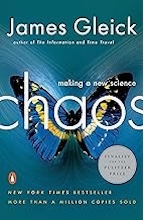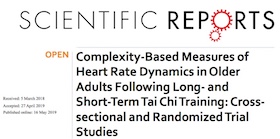A new variant of the electromagnetic field theory of consciousness: approaches to empirical confirmation. There are various electromagnetic (EM) field theories of consciousness. They postulate an epineural EM field which, due to its binding properties, unifies the different neuronal information differences originating from various sensory and cognitive processes. Only through a real physical integration in space within this field could phenomenal consciousness arise. This would solve the binding problem mentioned in the philosophy of mind. On closer inspection, the electromagnetic interaction not only provides an explanation for the integrative property of the EM field, but also for the necessary differentiating contrasts of information. PMC11527664.
Consciousness: Matter or EMF? Conventional theories of consciousness (ToCs) that assume that the substrate of consciousness is the brain's neuronal matter fail to account for fundamental features of consciousness, such as the binding problem. Field ToC's propose that the substrate of consciousness is the brain's best accounted by some kind of field in the brain. Electromagnetic (EM) ToCs propose that the conscious field is the brain's well-known EM field. EMF-ToCs are defined as those ToCs that propose that the seat of consciousness resides in the brain's EM field, rather than its neuronal substrate. PMC9889563
Consciousness and inward electromagnetic field interactions. Electromagnetic field (EMF) theories of mind/brain integration have been proposed to explain brain function for over seventy years. Interest in this theory continues to this day because it explains mind-brain integration and it offers a simple solution to the “binding problem” of our unified conscious experience. Thus, it addresses at least in part the “hard problem” of consciousness. EMFs are easily measured and many corelates have been noted for field activity; associated with loss and recovery of consciousness, sensory perceptions, and behavior. Electromagnetic fields are produced (generated) by neurons that are connected by chemical and/or electrical synapses, as well as via ephaptic connections. PMC9714613.
Qualia and Phenomenal Consciousness Arise From the Information Structure of an Electromagnetic Field in the Brain. Living systems express a boundary between themselves and the environment, requiring them to model (coarsely emulate) information from their environment in order to control through actions, to the extent possible, the vast sea of variety in which they are immersed. This model, expressed in an EM field, is P-consciousness. The model is the best possible representation of the moment-to-moment niche-relevant (action-relevant: affordance) information an organism can generate (a Gestalt). Information that is at a lower level than niche-relevant, such as the unanalyzed retinal vector-field, is not represented in P-consciousness because it is not niche-relevant. Living organisms have sensory and other systems that have evolved to supply such information, albeit in a coarse form. PMC9289677.
The Slowest Shared Resonance: A Review of Electromagnetic Field Oscillations Between Central and Peripheral Nervous Systems. Electromagnetic field oscillations produced by the brain are increasingly being viewed as causal drivers of consciousness. Recent research has highlighted the importance of the body's various endogenous rhythms in organizing these brain-generated fields through various types of entrainment. We expand this approach by examining evidence of extracerebral shared oscillations between the brain and other parts of the body, in both humans and animals. We then examine the degree to which these data support one of General Resonance Theory's (GRT) principles: the Slowest Shared Resonance (SSR) principle, which states that the combination of micro- to macro-consciousness in coupled field systems is a function of the slowest common denominator frequency or resonance. This principle may be utilized to develop a spatiotemporal hierarchy of brain-body shared resonance systems. It is predicted that a system's SSR decreases with distance between the brain and various resonating structures in the body. The various resonance relationships examined, including between the brain and gastric neurons, brain and sensory organs, and brain and spinal cord, generally match the predicted SSR relationships, empirically supporting this principle of GRT. PMC8888685.
Neural Correlates of Non-ordinary States of Consciousness in Pranayama Practitioners: The Role of Slow Nasal Breathing. SNB induced (1) slowing of electroencephalography (EEG) activities (delta-theta bands) in prefrontal regions, (2) a widespread increase of theta and high-beta connectivity complemented by an increase of phase-amplitude coupling between the two bands in prefrontal and posterior regions belonging to the Default Mode Network, (3) an increase of high-beta networks small-worldness. (4) a higher perception of being in a non-ordinary state of consciousness. The emerging scenario strongly suggests that the effects of SNB, beyond the relative contribution of vagal stimulation, are mainly ascribable to olfactory epithelium stimulation. In conclusion, slow Pranayama breathing modulates brain activity and hence subjective experience up to the point of inducing a non-ordinary state of consciousness. PMC8977447.
The Easy Part of the Hard Problem: A Resonance Theory of Consciousness. Synchronization, harmonization, vibrations, or simply resonance in its most general sense seems to have an integral relationship with consciousness itself. One of the possible "neural correlates of consciousness" in mammalian brains is a specific combination of gamma, beta and theta electrical synchrony. More broadly, we see similar kinds of resonance patterns in living and non-living structures of many types. What clues can resonance provide about the nature of consciousness more generally? This paper provides an overview of resonating structures in the fields of neuroscience, biology and physics and offers a possible solution to what we see as the "easy part" of the "Hard Problem" of consciousness, which is generally known as the "combination problem." The combination problem asks: how do micro-conscious entities combine into a higher-level macro-consciousness? The proposed solution in the context of mammalian consciousness suggests that a shared resonance is what allows different parts of the brain to achieve a phase transition in the speed and bandwidth of information flows between the constituent parts. PMC6834646.
The frequency architecture of brain and brain body oscillations: an analysis. An analysis of the center frequency of traditional frequency bands and their coupling principles suggest a binary hierarchy of frequencies. This principle leads to the foundation of the binary hierarchy brain body oscillation theory. Its central hypotheses are that the frequencies of body oscillations can be predicted from brain oscillations and that brain and body oscillations are aligned to each other. The empirical evaluation of the predicted frequencies for body oscillations is discussed on the basis of findings for heart rate, heart rate variability, breathing frequencies, fluctuations in the BOLD signal, and other body oscillations. The conclusion is that brain and many body oscillations can be described by a single system, where the cross talk - reflecting communication - within and between brain and body oscillations is governed by m : n phase to envelope and phase to phase coupling. PMC6668003.
The Clinical, Philosophical, Evolutionary and Mathematical Machinery of Consciousness: An Analytic Dissection of the Field Theories and a Consilience of Ideas. Any theory of consciousness must include the fact that a conscious entity, as far as is known, is a wet biological medium (the brain), of stupendously high entropy. This organ or entity generates a field that must account for the "binding problem", which we will define. This proposed field, the conscious electro-magnetic information (CEMI) field, also has physical properties, which we will outline. PMC7813534.
Magnetic correlates in electromagnetic consciousness. We examine the hypothesis that consciousness is a manifestation of the electromagnetic field, finding supportive factors not previously considered. It is not likely that traditional electrophysiological signaling modes can be readily transmitted throughout the brain to properly enable this field because of electric field screening arising from the ubiquitous distribution of high dielectric lipid membranes, a problem that vanishes for low-frequency magnetic fields. Many reports over the last few decades have provided evidence that living tissue is robustly sensitive to ultrasmall (1-100 nT) ELF magnetic fields overlapping the γ-frequency range often associated with awareness. An example taken from animal behavior (coherent bird flocking) lends support to the possibility of a disembodied electromagnetic consciousness. In contrast to quantum consciousness hypotheses, the present approach is open to experimental trial. PMID: 27049696. PDF.
The entropic brain: a theory of conscious states informed by neuroimaging research with psychedelic drugs. Entropy is a dimensionless quantity that is used for measuring uncertainty about the state of a system but it can also imply physical qualities, where high entropy is synonymous with high disorder. At its core, the entropic brain hypothesis proposes that the quality of any conscious state depends on the system's entropy1 measured via key parameters of brain function. Entropy is a powerful explanatory tool for cognitive neuroscience since it provides a quantitative index of a dynamic system's randomness or disorder while simultaneously describing its informational character, i.e., our uncertainty about the system's state if we were to sample it at any given time-point. The phenomenon of self-organized criticality refers to how a complex system (i.e., a system with many constituting units that displays emergent properties at the global-level beyond those implicated by its individual units) forced away from equilibrium by a regular input of energy, begins to exhibit interesting properties once it reaches a critical point in a relatively narrow transition zone between the two extremes of system order and chaos. PMC3909994.
Integrating information in the brain's EM field: the cemi field theory of consciousness. Information integration is implemented in time, rather than space, and thereby cannot correspond to physically integrated information. Only energy fields are capable of integrating information in space. I describe the conscious electromagnetic information (cemi) field theory which has proposed that consciousness is physically integrated, and causally active, information encoded in the brain's global electromagnetic (EM) field. I here extend the theory to argue that consciousness implements algorithms in space, rather than time, within the brain's EM field. I describe how the cemi field theory accounts for most observed features of consciousness and describe recent experimental support for the theory. PMC7507405.
The CEMI field theory: Closing the loop. Several theories of consciousness first described about a decade ago, including the conscious electromagnetic information (CEMI) field theory, claimed that the substrate of consciousness is the brain's electromagnetic (EM) field. These theories were prompted by the observation, in many diverse systems, that synchronous neuronal firing, which generates coherent EM fields, was a strong correlate of attention, awareness, and consciousness. However, when these theories were first described there was no direct evidence that synchronous firing was actually functional, rather than an epiphenomenon of brain function. Additionally, any EM field-based consciousness would be a 'ghost in the machine' unless the brain's endogenous EM field is also able to influence neuron firing. Once again, when these theories were first described, there was only indirect evidence that the brain's EM field influenced neuron firing patterns in the brain. In this paper I describe recent experimental evidence which demonstrate that synchronous neuronal firing does indeed have a functional role in the brain; and also that the brain's endogenous EM field is involved in recruiting neurons to synchronously firing networks. The new data point to a new and unappreciated form of neural communication in the brain that is likely to have significance for all theories of consciousness. I describe an extension of the CEMI field theory that incorporates these recent experimental findings and integrates the theory with the 'communication through coherence' hypothesis. PDF.
Synchronous Firing and Its Influence on the Brain’s Electromagnetic Field. Evidence for an Electromagnetic Field Theory of Consciousness. The human brain consists of approximately 100 billion electrically active neurons that generate an endogenous electromagnetic (em) field. Synchronous firing of distributed neurons phase-locks induced em field fluctuations to increase their magnitude and influence. Synchronous firing has previously been demonstrated to correlate with awareness and perception, indicating that perturbations to the brain’s em field also correlate with awareness. The brain’s em field represents an integrated electromagnetic field representation of distributed neuronal information and has dynamics that closely map to those expected for a correlate of consciousness. PDF. 
The Conscious Electromagnetic Information (Cemi) Field Theory: The Hard Problem Made Easy? Consciousness is that component of the brain's electromagnetic field that is downloaded to motor neurons and is thereby capable of communicating its informational content to the outside world. Using cemi field theory I propose a working hypothesis that shows, among other things, that awareness and information represent the same phenomenon viewed from different reference frames. PDF.




